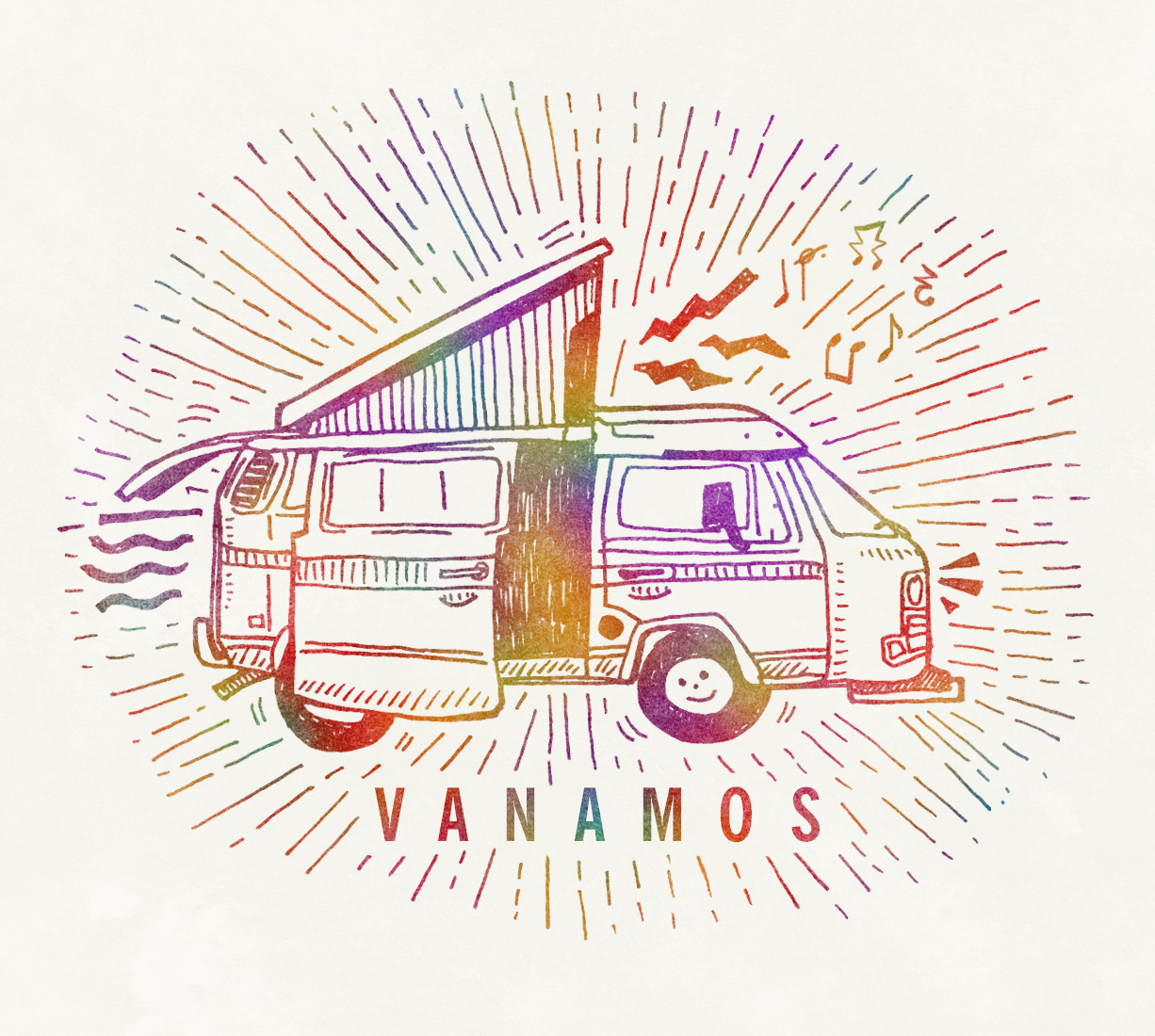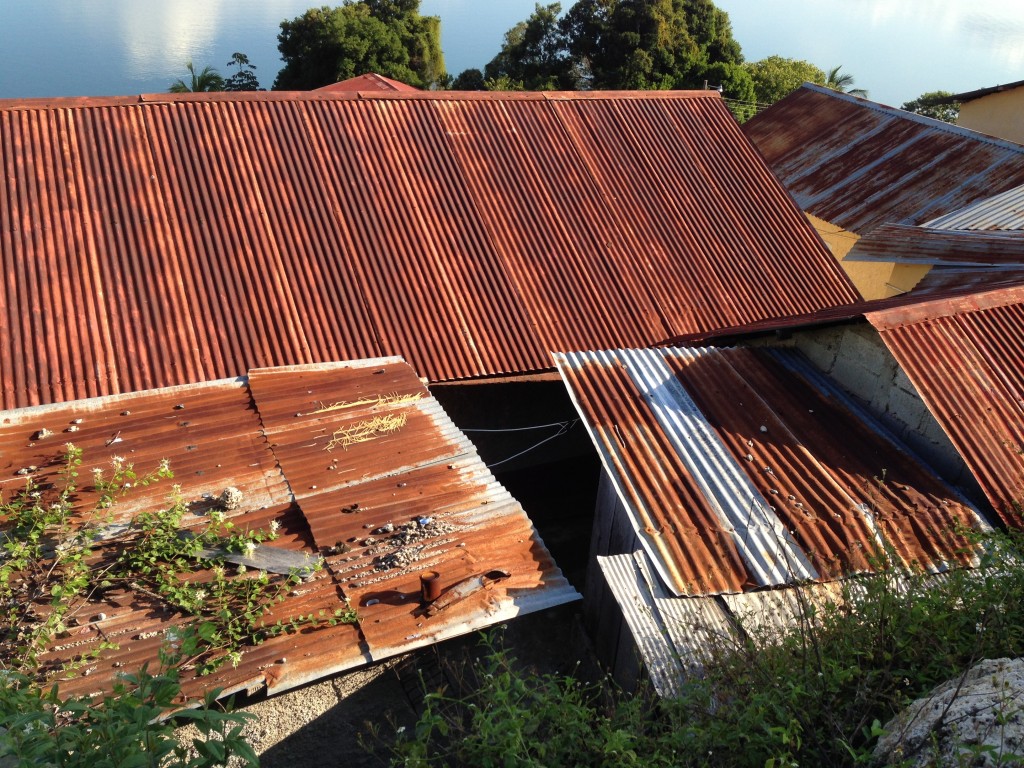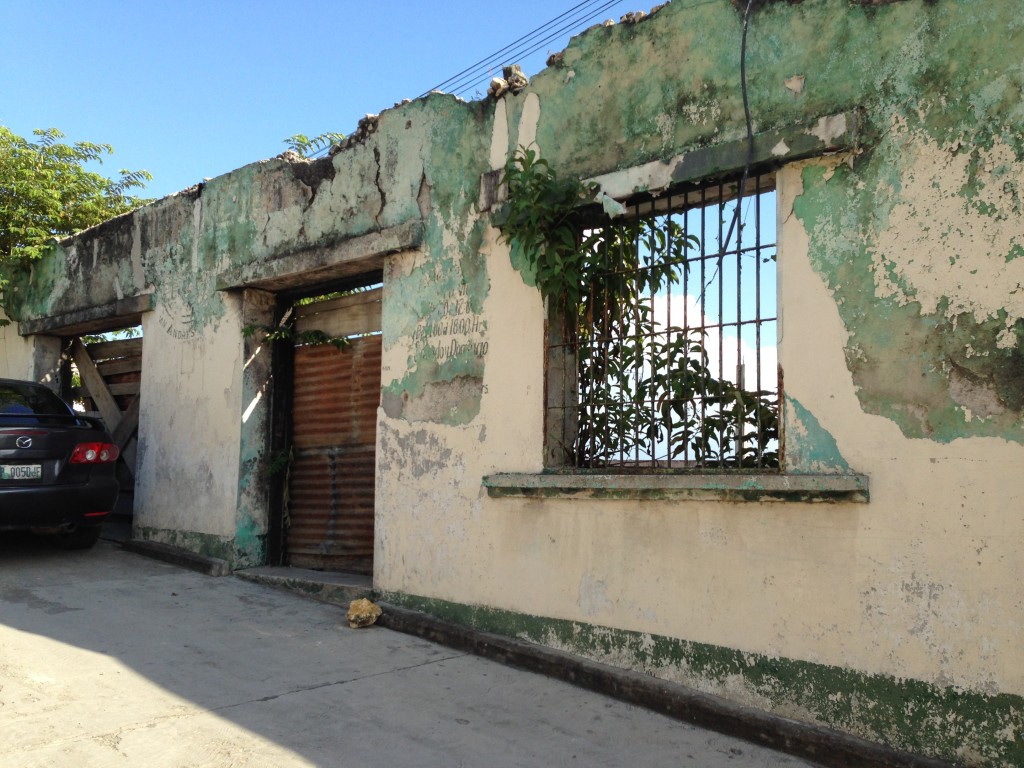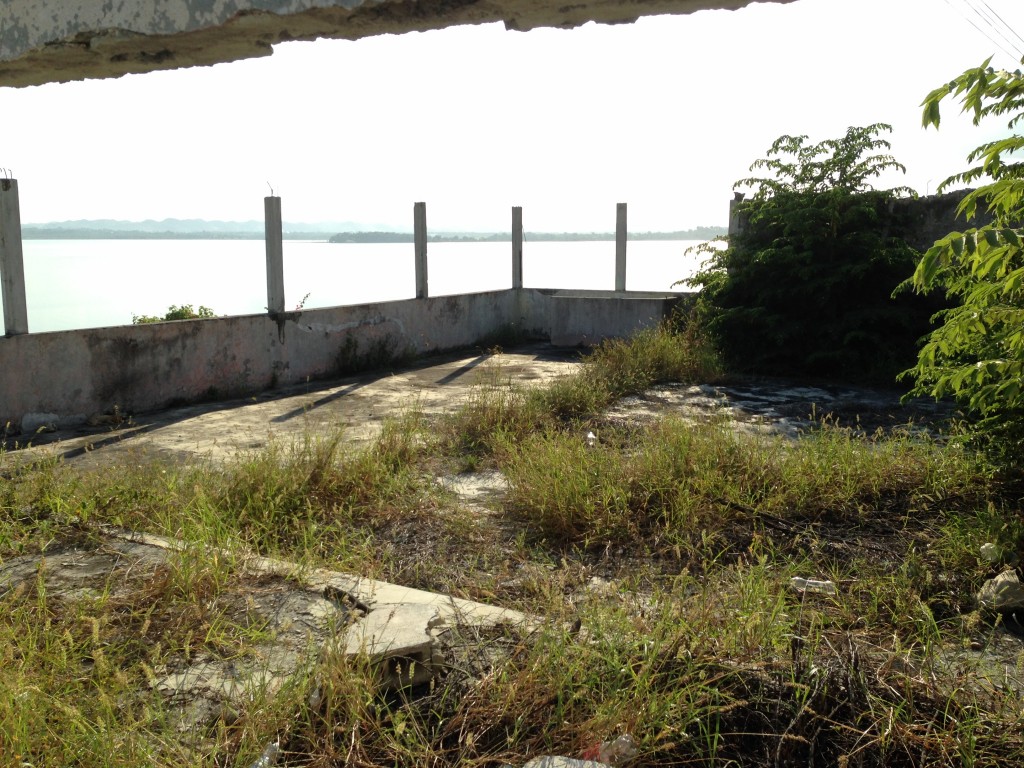In the summer of 1995 I took what I consider my first real solo adventure and came to Guatemala to go to Spanish school in a little village called San Andres, on the Lago Peten Itza. We've spent over a week on this lake and hadn't yet been to San Andres. The area has changed a bit - 20 years ago the only real way to get to San Andres was via little public lanchas, large motorboats that shuttled between the two sides of the lake. I fully expected to be able to hop on a lancha and visit my former host family and see the school where I first studied Spanish.On one of our first days in Flores, we were shocked at the quoted price of 200Q ($24) for the ride across the lake. Apparently in the past 20 years there have been road improvements, making it possible for buses to get to San Andres, making the public lanchas obsolete. So it took us a week to finally agree to pay $24 for a 30-minute boat ride to see where I had spent 3 weeks.
The village itself has changed as well with improvements to the waterside: a nice public square and promenade area. After some confusion I managed to find the street where I had lived with Nidia Fion and her 3 children, Siomara, Romero, and Teresa. There was a group of women sitting on the corner and I asked them if they knew where we could find the family. They exchanged strange glances with each other that said something was off. I asked if she'd died and they said yes, 9 months ago, in a terrible incident. The group we had asked was Nidia's family. I didn't quite catch what Nidia's sister was telling me about what happened but maybe her husband killed her. This wasn't quite the reunion I was envisioning. The sister graciously let us walk around the outside of the house and I took pictures of the rooftops of where I had lived. The house had been improved since I was there, though I could still see the roofs of the little outhouse and my stand-alone room where I had slept. We didn't go inside the compound so I couldn't check out the interior.
We then walked to where I remembered the school being and found a burned out shell. I'd heard that it was burned but I just assumed it had been rebuilt. Not so - it was just walls, no roofs, and the beautiful airy classroom with the fantastic view over the lake was an empty space overgrown with weeds.
It was kind of a sad visit, not at all what I imagined, where I would sit down with Nidia and chat with her fluently, then head over to the school and make them proud that I was now speaking fluently, thanks to their teaching 20 years ago.
To top it all off, we're quite certain that the pig who lived in the house next door to Nidia's has also been eaten.
Not Dead Yet
We are always the last to leave the party, sometimes even tucking the hosts into bed before turning off the lights and locking the door behind us, and our planned four to five day stay in Flores, Guatemala, proved no different. We stayed ten nights.
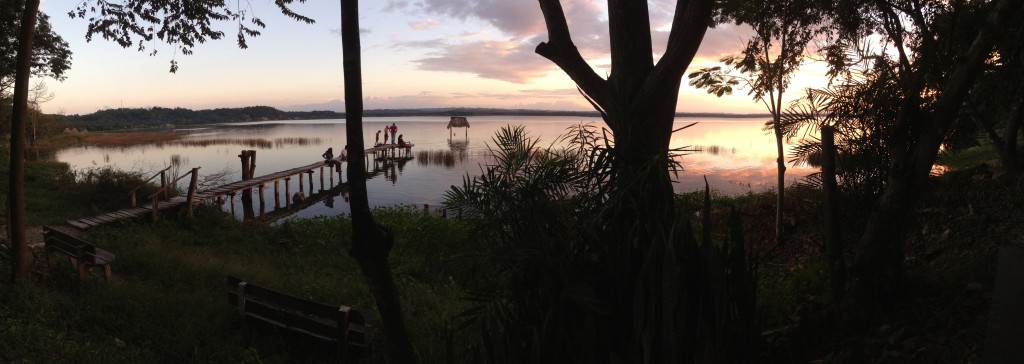
Technically, the ten nights we spent in Flores included a night in Tikal and four in Remate, but all these places are in the same few square kilometer area of the country so its semantics. Maybe it is more accurate to say we spent ten nights around Lago Peten Itza because Flores and Remate are on opposite sides of the lake, but however we frame it, they were happy days.
When planning our visit to this area of Guatemala I thought we could stay a week because there seemed to be enough fun things to do, I factor in days were we don’t do anything, and of course, anytime you stay someplace for a few days you learn about other things to do there, so if we actually wanted to do everything possible in the area, we should probably just move here.
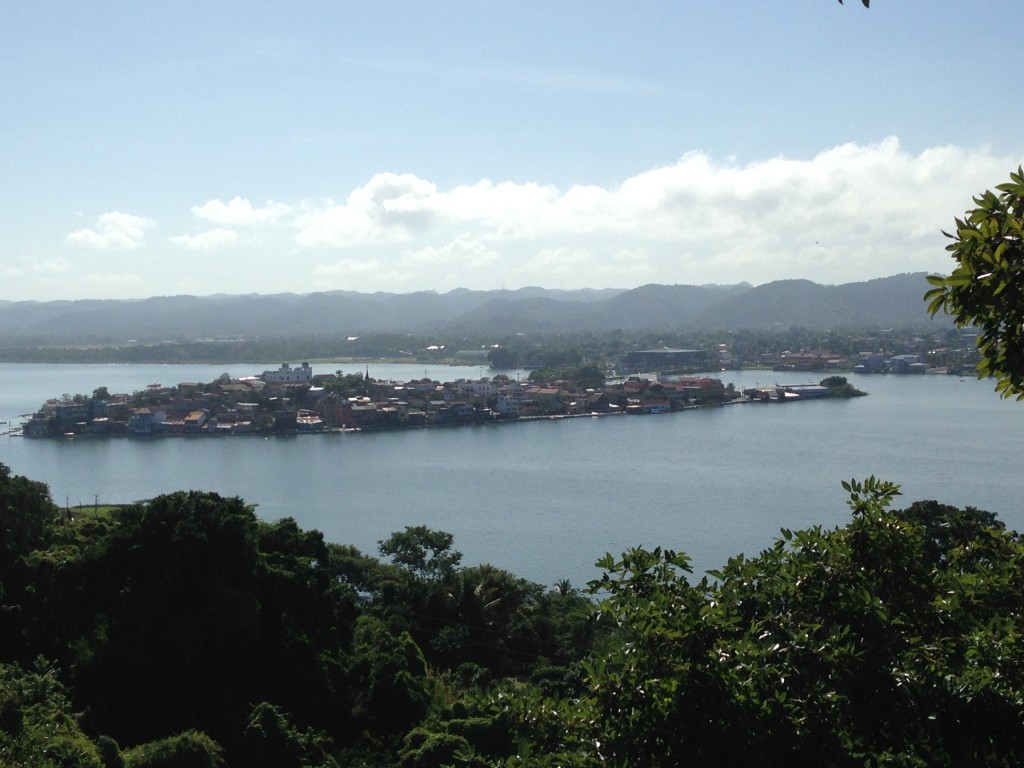
R also studied Spanish in San Andres, which is a small village on another side of Lago Peten Itza, for three weeks back in the summer of ‘95, so we all wanted to go visit her old haunts - the one room shack were she slept and the one room school were she studied - which have been so impactful on her life, and thus, on ours.
In 1995, before the wheel was invented, lanchas (small motor boats) were the way to get from place to place on the lake. Nowadays you can drive to San Andres, but to make it feel like old times for R, we hired a boat to take us.
It was a bittersweet return; we learned the matriarch of R’s host family recently passed away, the language school burned down, and the pig she used as a landmark was made into carnitas. Talk about hitting the trifecta. R has written about our visit in a post entitled - "San Andres - 20 years later" - which will be posted shortly.
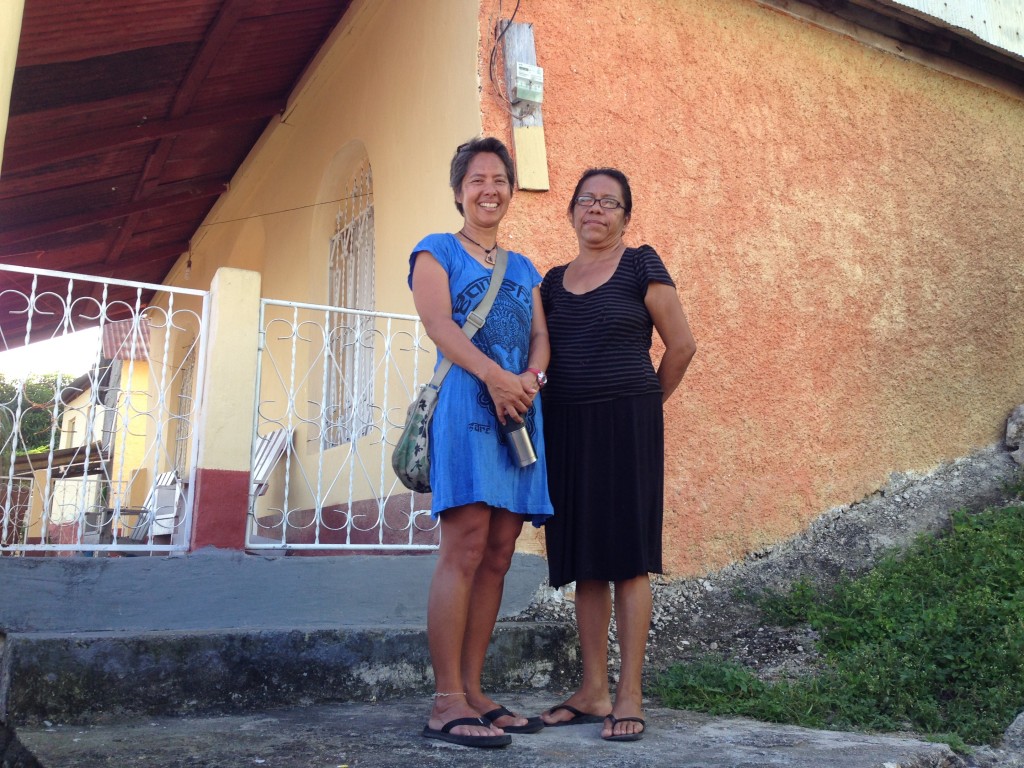
The streets were as steep and the temperatures as hot as R remembered, though, and since the kids weren’t going for swimming from the boat pier - there was a piece of a cow jawbone at waters edge - we had the lancha stop in the middle of the lake so we could splash and play around.
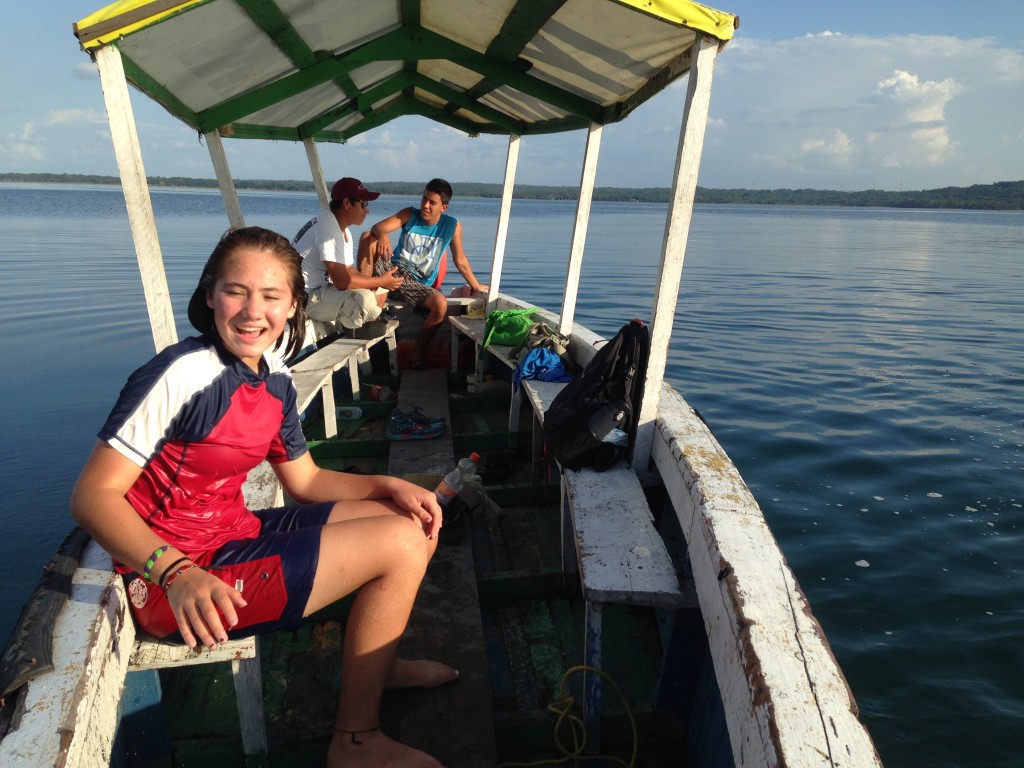
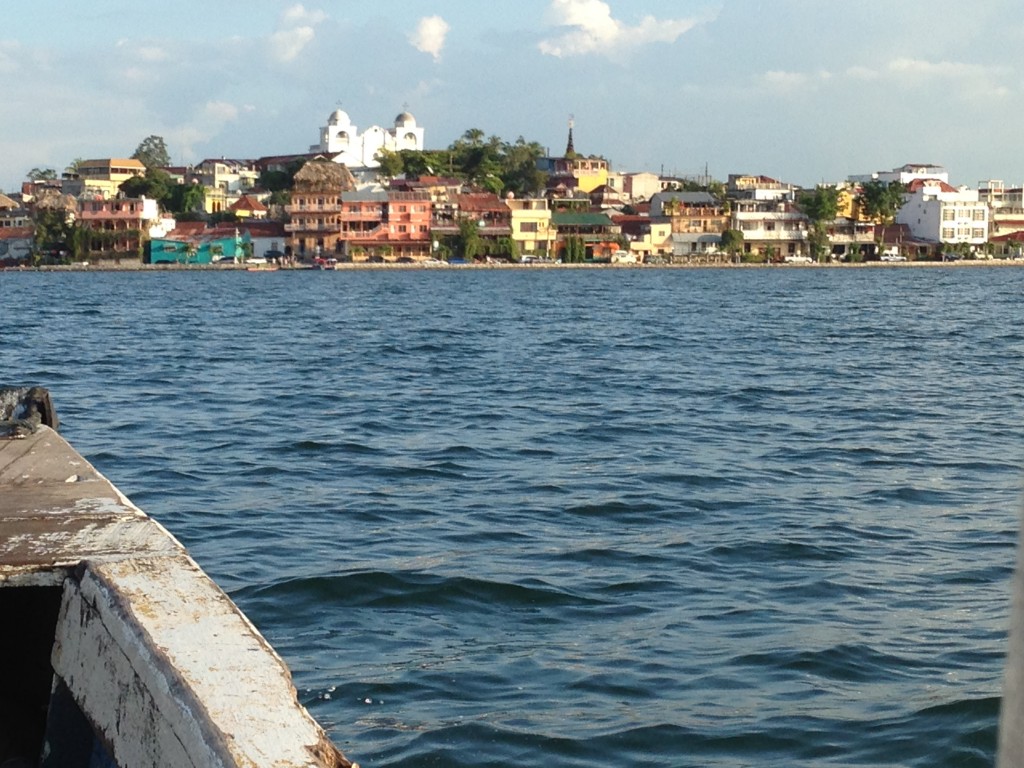

That was the thing to do in Remate as well - it was the first time we ever rented paddleboards on Christmas day. We met a family from New Zealand in Remate and Coconut and J had fun swimming with Hugo and Tooey each afternoon from the dock in front of the hotel\restaurant Mon Ami. We camped in the parking lot of the restaurant one night for the cost of a meal. We also got to eat the food that came with the meal, so it was like camping for free.

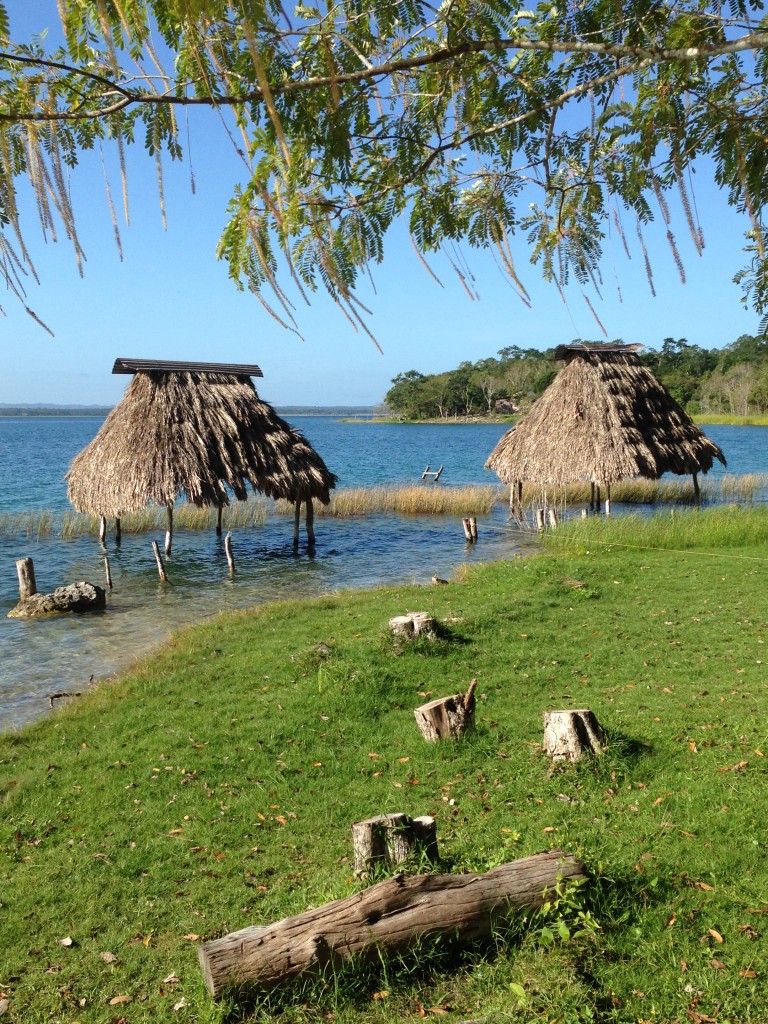
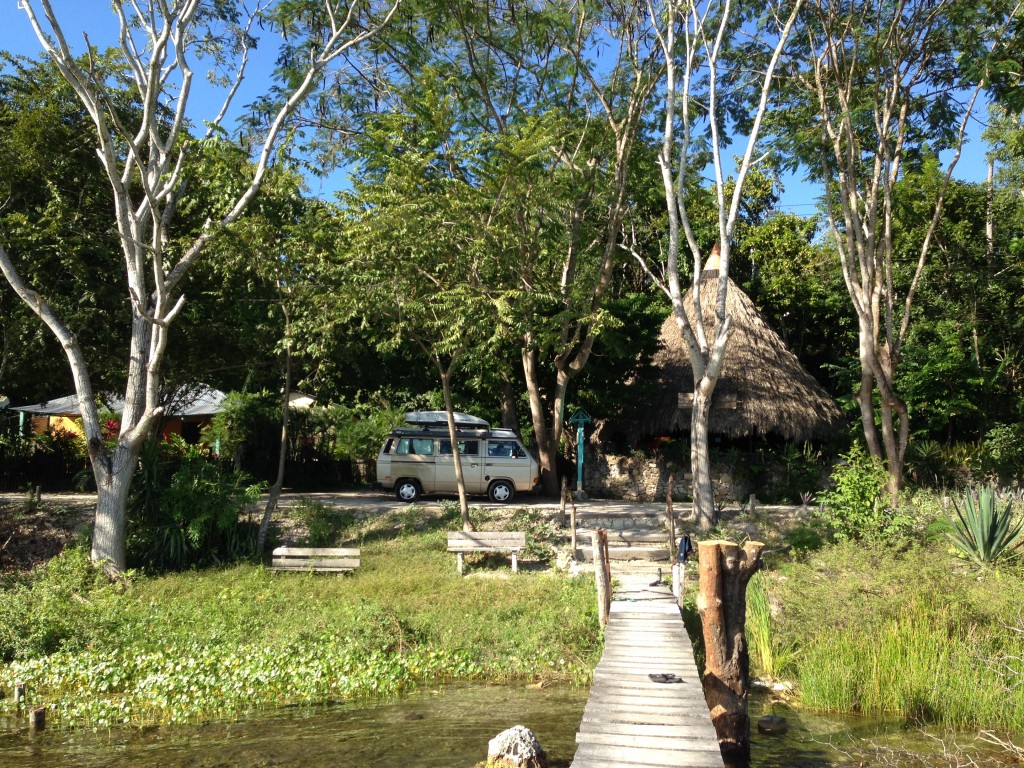

There was less to do in Flores besides sweat, but it was our base for wifi, groceries, and to play the Guatemalan version of Monopoly at the Hospedaje Yaxha, where I also had a few beers with the guys that work there, Scott and Ben.
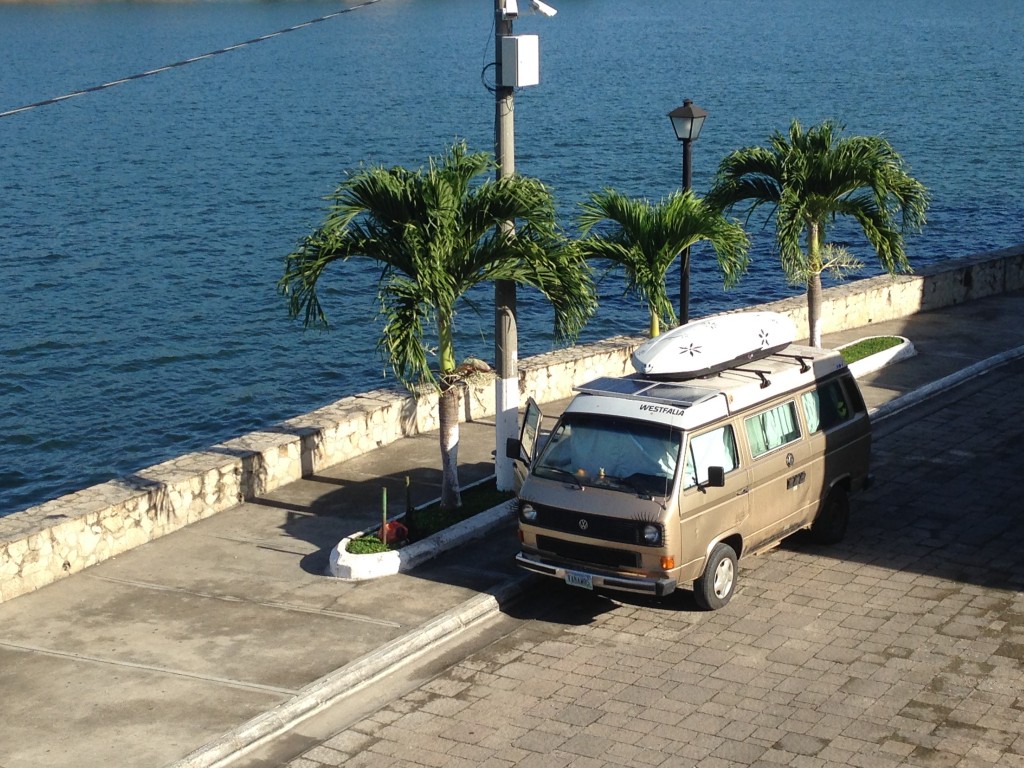
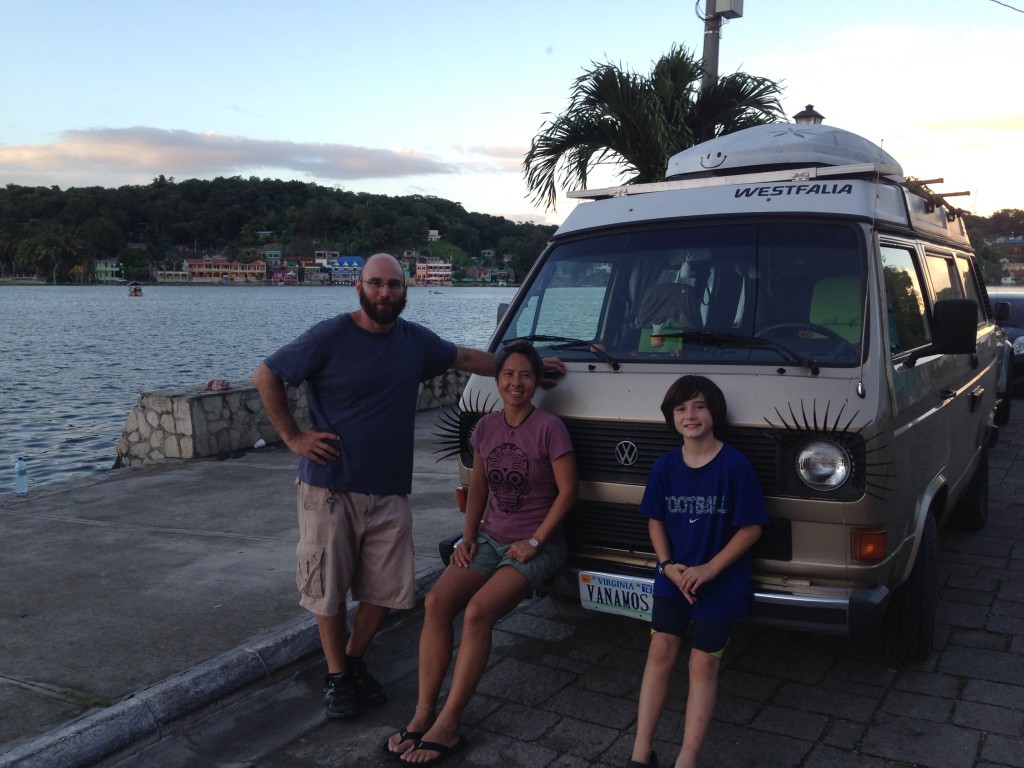
In between visits to Tikal and Remate we kept ending up in Flores. It's a pretty town, on an island small enough to easily walk around, with plenty of restaurants, hostels, and street parking. There are also many young gringo travelers to make R and I nostalgic for the opportunities of youth. Not that we feel we squandered ours in any way - well, I do - but when all that youth is right there in your face you recognize that certain opportunities are now pipe dreams and that you have to take advantage of your middle aged chances. After all, we're not dead yet.
Tikal with kids
(Ed. Note - I wrote this in a rush on Tuesday morning before we left Flores for the last time and did not get a chance to complete many of the thoughts, or even, the article. Please do not judge my writing on this piece, and please check back in a few days when I have a chance to complete. We are heading to Lanquin and underground caves today so do not expect to have Wifi for a few days. Maybe not until the weekend when we are in Rio Dulce.) When we arrived in the Gran Plaza, the 1,300 year old social and administrative center of the vast Mayan archeological site of Tikal, moments before the sun did its turn on the other side of the globe, we were tired and sweaty but still managed to get a smile out of Coconut and J for the family photo album. This is because R, applying knowledge gleaned from our visit to Palenque a week earlier, had brilliantly thought to advance purchase the "no complaints and unlimited photo" package for the low cost of a soda and Iron Man 3, to be screened upon return to the van.
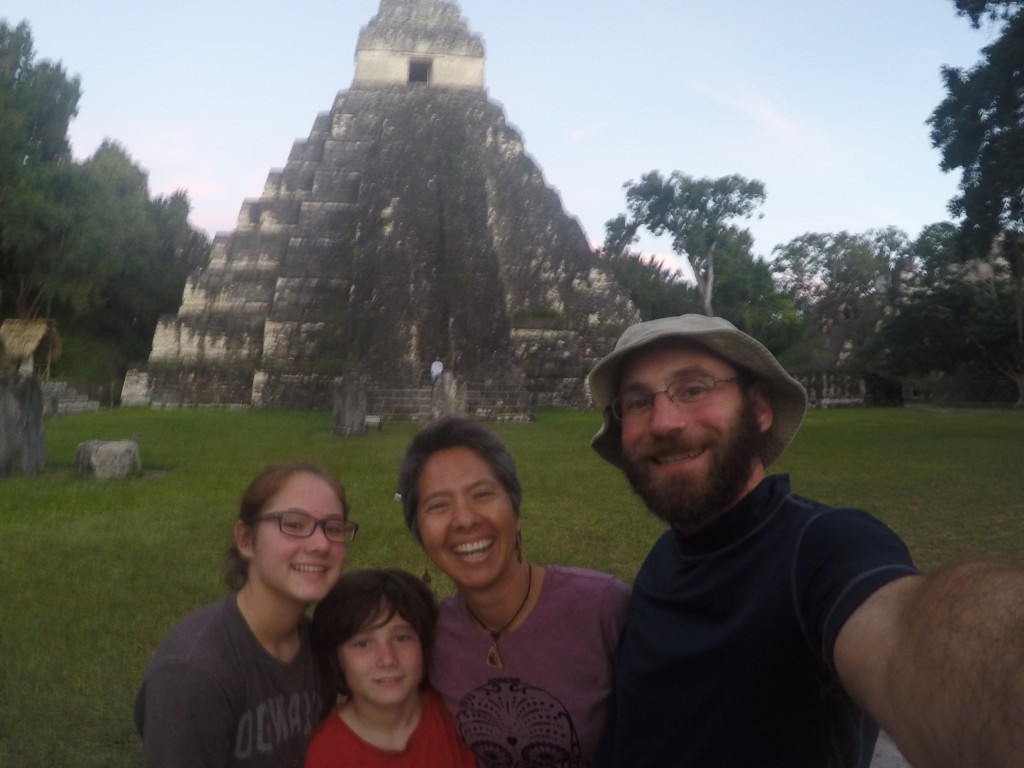
From the entrance to Tikal, where we purchased our entry tickets, to the parking lot for the ruins is a twenty minute drive through thick, turkey-infested jungle. From the field where we camped, along with fifteen million mosquitoes with teeth like Jaws and an appetite to match, to the Gran Plaza is another thirty minute walk. This place is in the middle of nowhere.


If anyone not from Guatemala ever thinks about Guatemala, I am making these numbers up, there is a five percent chance they will think about the scene from Return of the Jedi where the X-Wing fighters buzz the stone temple comb poking through the tree canopy - that's Tikal - and a ninety-five percent chance they will draw a complete blank because, and I am not making this up, who ever thinks about Guatemala anyway?
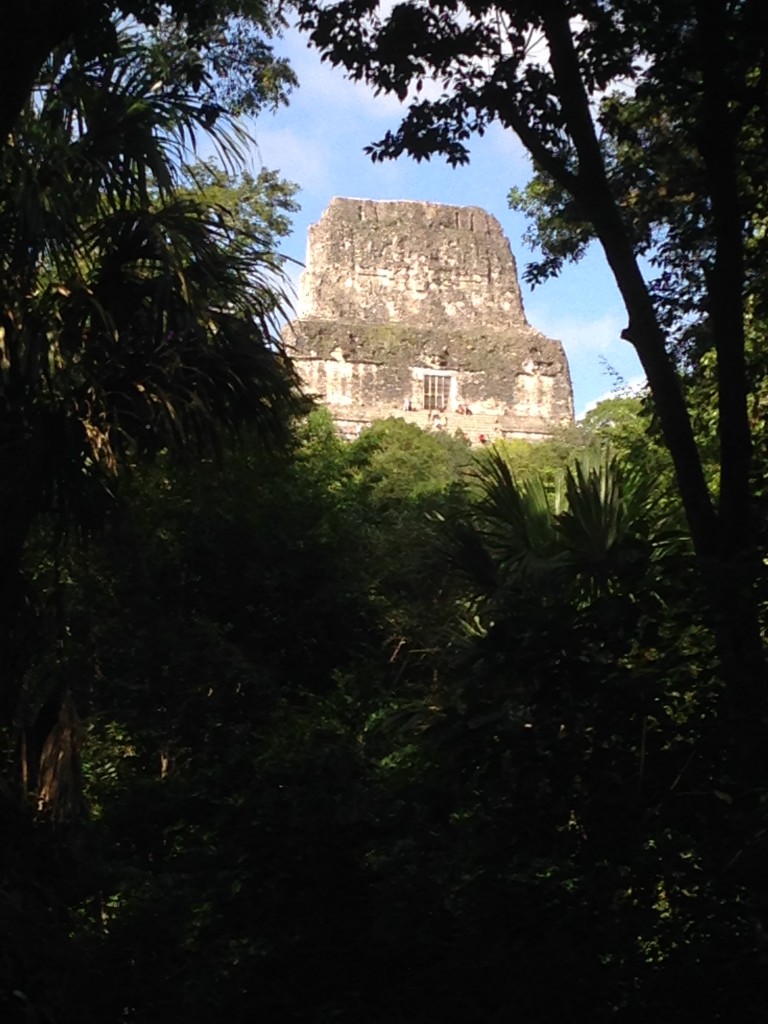
A ticket purchased after 4 p.m. on Day 1 allows entry to the site on Day 2 and R and I took advantage of this by waking early and walking most of the marked paths to some of the ruins Coconut and J would be less likely to want to see. This worked out perfectly. When we got back to our camp at nine, the kids were awake (and boiling inside the van) and by ten we were back on our way to the Gran Plaza and some of the major sites.

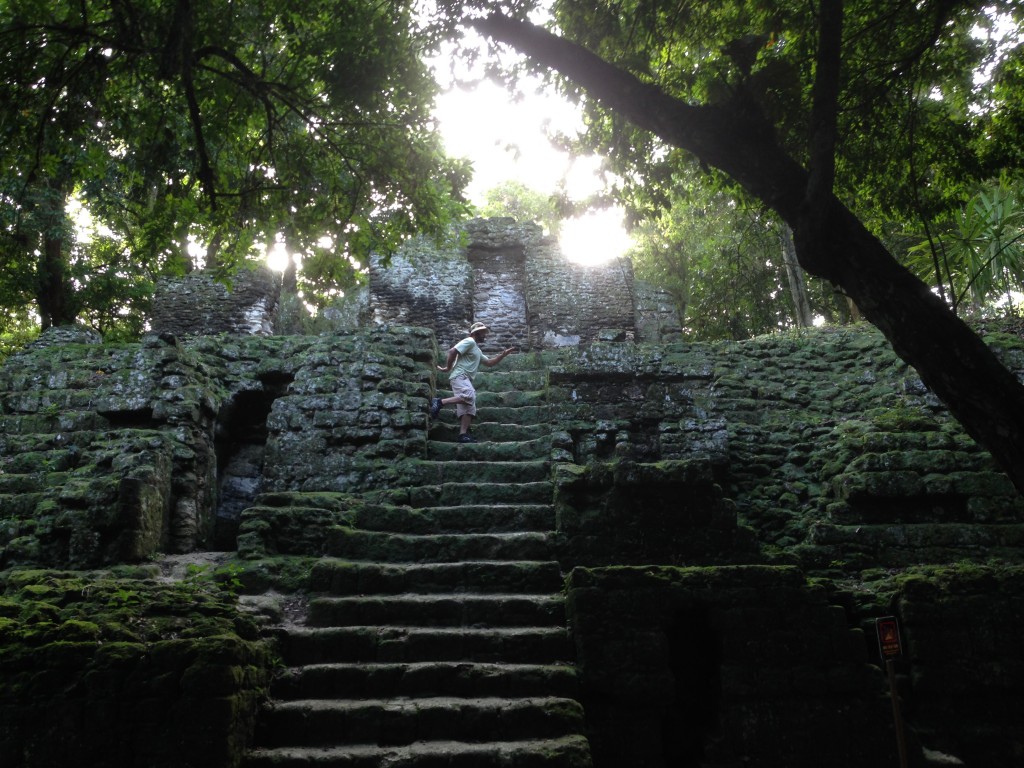

Twenty odd years ago, R visited Tikal and bribed a guard (she won't tell me how) to let her sleep on top of one of the temples. She couldn't remember which one, but with the help of one of the current guides, we decided it was Temple IV.
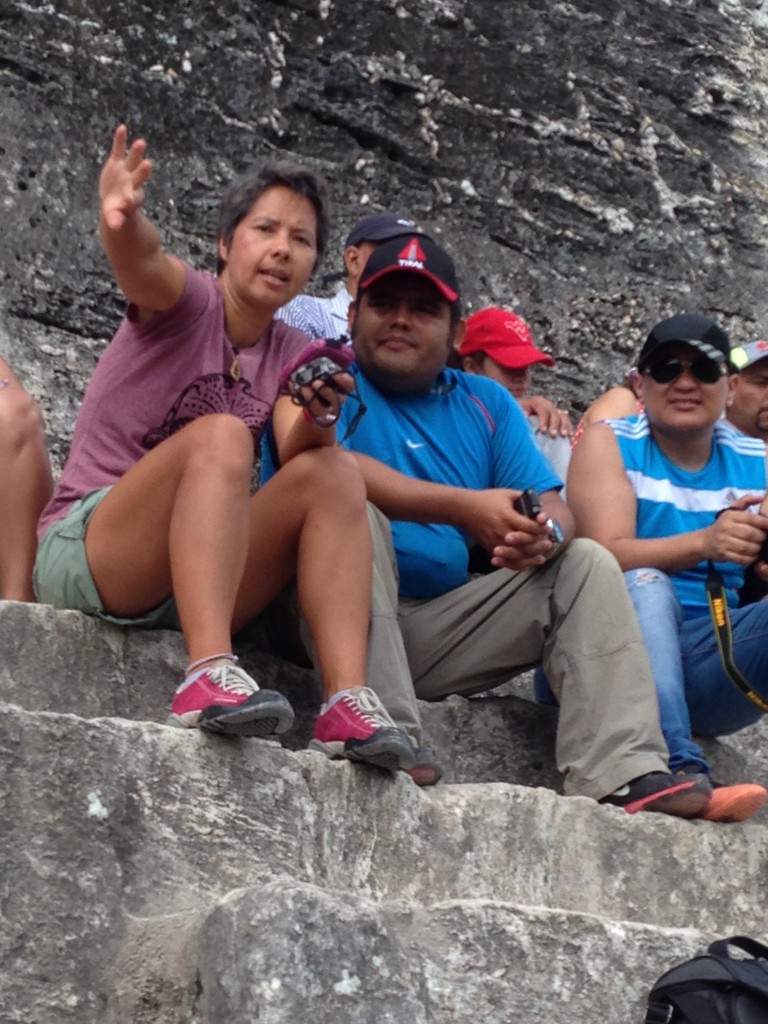

Welcome to Guatemala
We woke on Christmas eve morning to clear blue skies over Lago Peten Itza in El Remate, Guatemala. We’ve rented a studio apartment for the Christmas holiday. It has fabulously high ceilings and floor to top windows, and with its setting on the hillside and sun glistening off the lake, it reminds me of a Swiss chalet; though with the high humidity and the sun baking us like chickens in an oven, we are all thinking about swimming rather than skiing. Fortunately, the lake is great for swimming.

We crossed the border from Mexico to Guatemala on Saturday, December 19, at the Guatemalan town of El Ceibo. At the start, we were driving on a mud track through a cornfield and if we weren’t being passed by dozens of other cars, we might have turned around. We figured the road must lead somewhere that people wanted to go – why else would they be driving so fast through muddy farmland?
Eventually we ended up on a nice paved road and arrived at the border at 9:30am (it opened at 9.) I don’t have a lot of experience doing land border crossings, but I think this one was fairly smooth other than the 4 hours of waiting caused by your typical bureaucratic hassles. When we entered Mexico, we needed to leave a $200 USD deposit to dissuade us from selling our van Wesley, or otherwise keeping it in the country.
In order to retrieve our deposit, we needed to have our exit paperwork processed within the 180 days we were allowed to legally be in the country and show that we were exiting with the van. Because there was only one guy working this window at the border, and he didn’t give us any confidence that he knew what he was doing, we thought about just walking away. But we can theoretically live for 2 days on $200, so in the end we waited him out – three hours – and got our money back. Though, we are still waiting for it to show up as a credit on our credit card account. While we were waiting for him, we went to a food stand 300 meters inside Mexico, which we had just been stamped out of, and got a grilled chicken to eat.
The Guatemalan side was a little better; we only waited for an hour to be processed. Most of this time was spent standing on the sidewalk where we were supposed to pay our nonreturnable vehicle import fee of 160 Quetzales (8 Q equals about 1 USD) while the computer rebooted. The room where we got a Guatemalan entry stamp in our passport had six floor fans – giving the impression that it gets really, really hot in there - a stove, and enough tables and chairs so that it looked like the place might double as a restaurant when the border was closed. The office where we processed Wesley’s paperwork was a mobile trailer and we had to walk 200 meters into the country we weren’t legally allowed to enter yet, to get a photo copy of the passport page we just had stamped. Welcome to Guatemala.
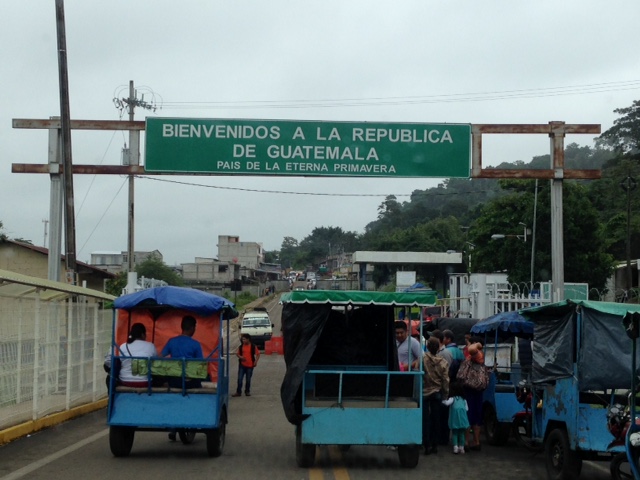
Right away Guatemala gave us the impression of a much poorer country than Mexico. It has been raining a lot and the mud went right up to the doors of the wood and tin shacks where the people live – there are no such things as front lawns. There are a lot more pigs wandering around, and turkeys. I saw a chicken nibbling bugs by the side of the road get spooked by something and run into the road and under a pick-up truck; the first time I saw any animal get hit on this trip, even though chickens, dogs, cows, donkeys, goats, and now pigs and turkeys, are wandering around like kids after the last school bell. This really has nothing to do with the economics of a country – the chicken getting run over, I mean – but it was the most interesting thing I can remember from our drive to Flores, and now El Remate, where we have been for the last week.

Flores is a small town on an island in Lago Peten Itza. R spent some time many moons ago on the lake when she studied Spanish at a small village – San Andres – on the other side from Flores. San Andres is too small for an ATM so she and her fellow students had to get a lancha (small boat) to Flores to withdraw cash. Most of the lanchas are gone now since they’ve built a road all the way around, but you can still get a boat ride to San Miguel – directly across from Flores – to walk around and see some jungle covered Mayan ruins, which settlement was apparently visited by Hernan Cortes in the 1500’s. I’m not sure how they know this; maybe he signed the register at the hotel.

Most of our time in Flores was spent preparing for Christmas – we learned how to sew stockings, and the kids wanted a tree and presents – and trying to find the cheapest place to eat. We’ve determined in our few days here that things in Guatemala cost twice what they would cost in Mexico – a beer costs about Q 12 (around $1.50 USD) and a box of milk about Q 20 (around $2.50 USD). It’s still a bit cheaper than U.S. prices, but not as affordable as we expected. We also have to relearn the art of haggling over prices in the market; we lost our touch in Mexico because, for the most part, it isn’t part of the culture.
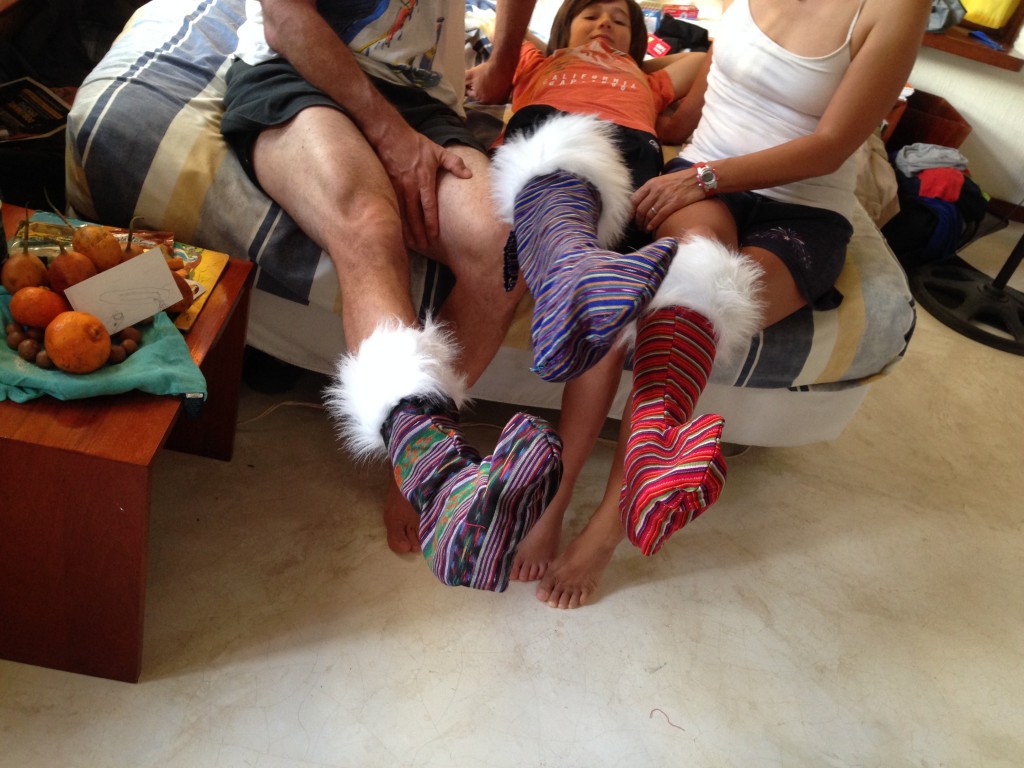
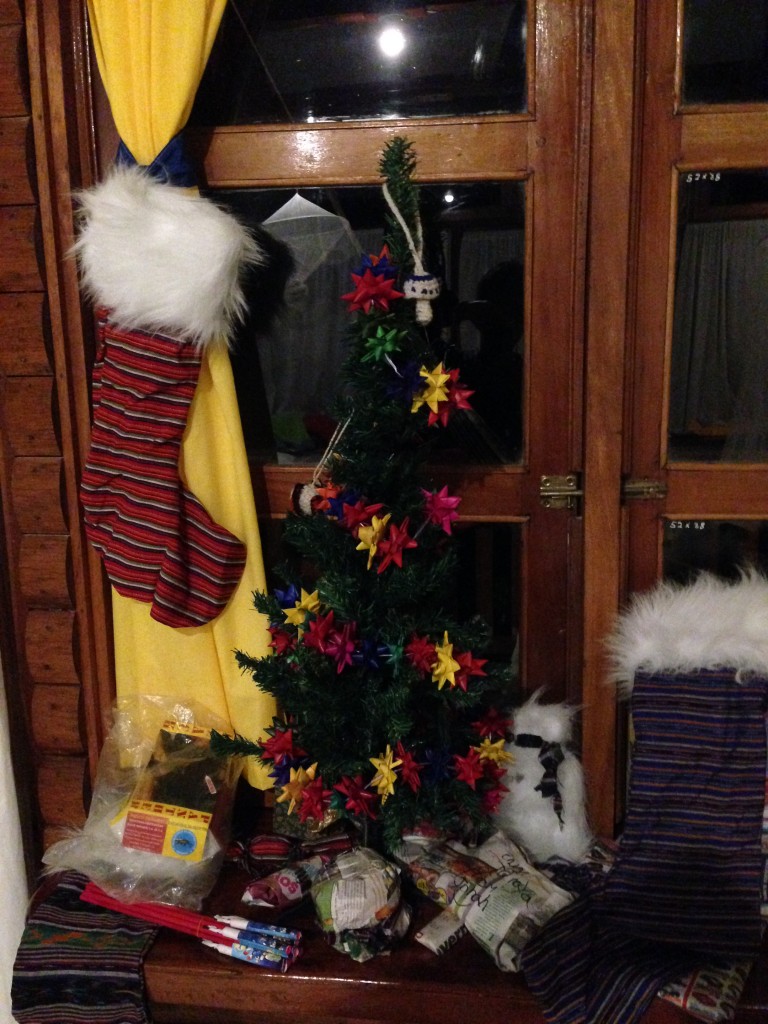
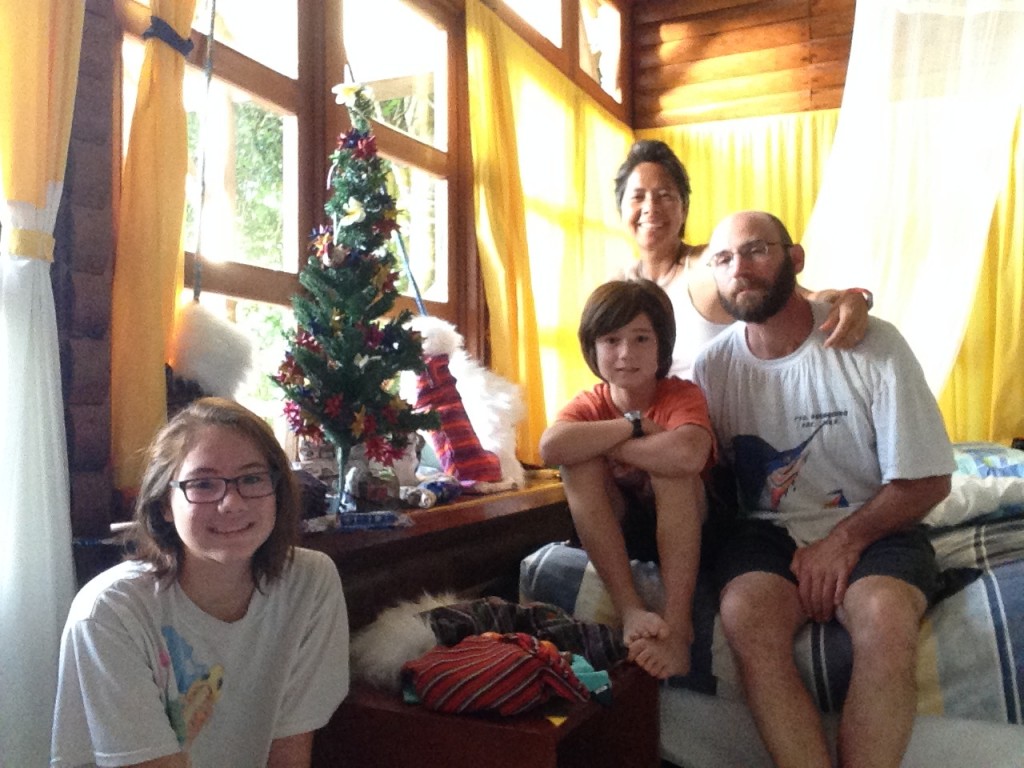
Of course, all of this may be because we are near Tikal, one of the top tourist destinations in the country - we’ve seen a lot more white (i.e., U.S., European, and Australian) travelers than we are accustomed to seeing. Things may be different as we put some distance between us and this place – which we plan to do after our visit to Tikal on Saturday and Sunday.
Migrant Story
With all the free time R and I have had each day after sending the kids to school, I’ve been able to read a lot of books. In addition to Scott O’Dell, Trenton Lee Stewart, and books by someone named J.K.Rowling, that were recommended to me by Coconut and J, I was also able to finish a book titled “Enrique’s Journey” which has particular relevance to us as we make our way south through Mexico and Central America. The book is an account of a Honduran boy’s life and the reasons that compel him to undertake a dangerous journey north through Mexico on top of freight trains and running from gangsters and authorities to find his mother in North Carolina. Enrique’s mother had left him and his sister in the care of family members when Enrique was five and departed for “El Norte” with the hope of making money to feed and support them. After ten years of mostly downs in his life, and overwhelming feelings of loss, abandonment, anger, and despair, and with his own economic prospects dim, Enrique sets off on his own journey north to find his mother. The book is compelling to us for a number of reasons.
First, the story is unfathomable. R and I can’t imagine, and I daresay you can’t either, the despair a mother must feel to leave her children behind to travel thousands of miles with the hope that she can land a job that will allow her to save enough money to, first of all, send money home to feed them, and second of all, either bring the children illegally to the U.S., or return home in a few years with enough money to buy land, build a house, and start a business. It is serendipity that I was born a U.S. citizen and my biggest problem is often whether to order one pizza or two, and what toppings.
In describing Enrique’s journey, the book goes into detail about the many dangers faced by him, and migrants generally, as they travel through Mexico. There is no means for them to immigrate legally so they are reduced to jumping on and off moving trains, losing limbs or their lives when they miss a step or handhold, getting robbed and beaten by gangsters in Chiapas, Mexico, getting robbed and killed by Mexican authorities throughout the country, starving, freezing, and being caught and sent back south (usually to Guatemala) to try again. Enrique was caught by Mexican immigration and sent back to the Mexican-Guatemalan border town seven times.
As we all have no doubt heard from Donald Trump, it’s not a unique thing for people living in Central America, particularly Guatemala, El Salvador, and Honduras, to immigrate to the U.S. to look for work. What is often missing from the sound bites, however, is any information on the reasons why people are compelled to leave family and friends behind to travel to a foreign country where they are often discriminated against, taken advantage of, and looked at suspiciously. I mean, let’s get serious, these people are not coming here so they can clean fast food joints’ toilets for minimum wage and then go out and get drunk and rape people and commit other crimes. I’m not an expert on this issue so this blog is not going to get into the many social and economic reasons why people might put their lives and families at risk to get to the U.S.; I encourage you to read the book instead because Sonia Nazario, the author of “Enrique’s Journey,” is a journalist and she does offer explanations. And let’s just say that the U.S. is not innocent - its historical Latin American policies are at least somewhat responsible for the lack of current economic opportunities within the countries. But let’s not go there, or dwell on the fact that our Congress still hasn’t come up with a sensible immigration reform proposal; instead focusing on partisan issues like trying to impeach the Commissioner of the IRS and restrict the sale of oranges at government cafeterias. In somewhat related current events - R and I recently read a NY Times article about how the U.S. has outsourced its border patrol.
A second reason why the book was so compelling to us was that when we leave Oaxaca in a few weeks, we will be heading directly into the belly of the beast - Chiapas state in Mexico - where Central American migrants face the most risk, including at the hands of Mexican immigration officials, who are just as likely to shake a migrant down as a bandit or gangster. Actually, we are more heading into the calf and ankles of the beast because we aren’t going to the places where migrants cross the border and hide in cemeteries and marshes to avoid detection from bandits who rob and beat them and from Mexican authorities who rob and beat and deport them, and we certainly won’t be riding on top of any freight trains, but to see this stuff first hand would be pretty fascinating. This is a pretty good overall summary of the dangers migrants face. There are also heart-warming stories - check this out.
Finally, a few weeks ago when we were driving back from Hierve el Agua, the frozen waterfall, we reached the top of a mountain and there was a guy walking alongside the highway, so we stopped to ask if he needed a ride. I may have stopped because I was still feeling the good will from getting a ride myself that morning after I had walked up from the campground to a store in town to buy some milk for our cereal and someone heading back down the hill stopped and told me to climb in. It turned out the guy at the top of the mountain was heading to Oaxaca city, which was where we were going - an hour’s drive away, so it was good for him that we did stop because even Wesley could get him there a lot faster than it would have taken him to walk there.
This guy had left a wife and two sons in Guatemala a few weeks before and was heading to the U.S. to make enough money to buy land. Two years, he thought. He had just been robbed of his last 400 pesos by a taxi driver who promised to take him to Oaxaca, only to kick him out after driving for a short while, and he hadn’t eaten since the day before. We gave him a few oranges and a can of beans - good hobo grub - and dropped him at the migrant shelter in Oaxaca where he would be able to stay and eat for a few days. Then he would be back on the road, just like we will be in a few weeks. Though, we are each writing very different stories.
La Libertadora and the Admirable Campaign
This past Friday was Simon Bolivar’s birthday. In case you don’t know, Bolivar was a Venezuelan military and political leader who was critical to establishing Venezuela, Ecuador, Bolivia, Peru, Colombia and a couple of other Central and South American countries no one in the United States cares about as independent of Spanish rule. He's the Southern Hemisphere's equivalent of George Washington. La Libertador! I read a biography about Simon Bolivar when we were in Ecuador in 2008 and when I came back to work I put an annual reminder for his birthday on Outlook. June 24, 1783. I don’t know exactly why I did this – I haven’t done it for any of the Kardashians or U.S. Presidents. Washington and Lincoln have that day in February, but it’s not their birthday and I don't know when their real birthdays are; I think that Federal holiday is designated mostly so department stores can have sales to boost corporate profits.
This year when that Outlook reminder popped up reminding me that it was Bolivar's two-hundredth and thirty-second birthday, which also believe it or not by some coincidence happened to be my last day at work for the year before we drive through Mexico and the Americas, I used it as an opportunity to get a little bit nostalgic for our time spent in Quito when I knew that if I needed shoelaces I could buy them from the woman in the plaza.
I also used it as an opportunity to think a little taller. See, Bolivar was inspired from a young age towards liberation of Latin America from Spanish rule and not only did he nail it, but he managed to get a country named after him. (Hint: it's not Simonia.)
Other than an early fascination with the Hells’ Angels, which I eventually ruled out as a career option because I didn’t own a motorcycle and couldn’t stomp on someone’s face with a jackboot, and a desire which I can't seem to shake to abuse my knee joints and back alignment by hiking the length of the Appalachian Trail, my life aspirations have been fairly traditional: job, marriage, mortgage, kids. Satisfied in that order.
I don’t know whether my vision of life inside a white picket fence sprung from the stable and loving home life provided by my parents, from watching countless re-runs of the domestic bliss embodied by The Munsters, or just from a lack of imagination. But that was the path I was on and I probably would have been very happy in living it, or at least in my ignorance of the chance I had to live some other way, but for that ingredient which has showed up at all the important junctions in my life – dumb luck.
I think I've already introduced you all to R, my wife. She's behind all of this with little resistance from me. So, let's just accept that I was lucky that she called my name and I was smart enough to call her back and that we got married and had two children (daughter, Coconut; son, formerly Rooster but heretofore referred to as J), and that we purchased an affordable house, and leave work at 5 each night, and aren't hooked on caffeine or cable TV, and have saddle bags on our bicycle so we can grocery shop and borrow books and movies from the library, and that we decided that an overland trip to South America was about the best thing that we could do right now when Coconut was 12 and J was just about to be ten.
Without getting into why the doctor thinks it's crazy how we got here, I want to give myself a little bit of credit because I think I may have been leading you all to believe that I am an unwilling passenger in all of this. No Siree Bob! I was actually looking for a smart, good-looking girl with her own wok and holes in her Birks to lead me to this point in our "Admirable Campaign" - sitting on sagging IKEA Henriksdal dining chairs for the last six years because we needed to put the $480 that we could spend on new chairs and better back support into this trip. And now we are on the verge of turning the wheel south on a trip around the world.
I wonder what Coconut and J think about life right now. Before we stuff them in an aluminum box and drive off. They haven't told me, in spite of my threats to perform Flashdance on the school playground if they don't. Do they want what we've given them so far - a rainbow ice cream treat of a palace? Or would they care to make different plans? Because whatever itch R and I are scratching from realizing whatever it is we've been hoping to realize over the last bunch of years, this is when Coconut and J may get swallowed whole.
They've already been bit - Coconut is twelve and has been on four continents and spent time in over ten U.S States and paints her nails black. Think she's going to do what everyone else wants her to do? Opening her eyes to the world in this way may buy her a lifetime passport. J has starred in a very informative and entertaining documentary on the hot water spouts of Iceland and likes to lie face up on a mattress placed directly under darts stuck into an asbestos tile ceiling and turn out of the way of the falling dart at the last second (well, not yet really, but I can see him doing this in college.) Basically, he's up for anything, and he may realize on this trip that anything is possible.
It's like this: are Coconut and J going to be happier knowing that they scored in the 90th percentile in standardized testing, or that the oil pan wasn't cracked after Pop took the tope, which is Spanish for giant Mexican speed bump, too fast? It's like this: maybe the captives didn't think they had it so bad until El Libertador rode to town. And this time, he's embarking on his Admirable Campaign hand-in-hand with La Libertadora!
